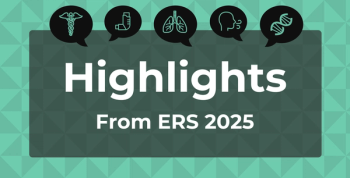
Biosimilar Starjemza Gains FDA Approval as Ustekinumab Shows Significant Psoriasis-Itch Relief
Key Takeaways
- Ustekinumab offers superior itch relief compared to guselkumab in severe psoriasis, despite guselkumab's better skin lesion improvement.
- The study involved 108 patients, with 90.4% of ustekinumab-treated patients experiencing significant itch improvement.
Ustekinumab offers superior itch relief for severe psoriasis compared with guselkumab, new data show.
Patients with severe psoriasis may find greater relief from debilitating itch with ustekinumab (Stelara) than with guselkumab (Tremfya; Janssen Pharmaceuticals), according to a new study published in
Starjemza (ustekinumab-hmny) was
Biologic therapies have revolutionized treatment for psoriasis by significantly improving skin symptoms.1 However, less is known about how effectively they alleviate itch, a symptom that can drastically affect quality of life. This study set out to compare itch improvement among patients with severe psoriasis treated with either ustekinumab or guselkumab.
Researchers evaluated 108 patients with severe psoriasis who had completed initial efficacy assessments following treatment with either ustekinumab (n = 74) or guselkumab (n = 34). Itch severity was measured using a numerical rating scale (NRS), visual analog scale (VAS), and verbal rating scale (VRS). The primary outcome was improvement in NRS after 3 injections, with a 4 point or greater improvement considered clinically meaningful.
In the ustekinumab group, 70.3% (52 patients) experienced moderate-to-severe itching at baseline. Improvement in itch symptoms (NRS ≥ 4) was observed in 90.4% of these patients (n = 47). The overall mean change on the NRS was 4.6, and it was even more prounounced within the moderate-to-severe itch group, where the mean change reached 6.3 (±2.2). In contrast, the guselkumab group had 73.5% (n = 34) reporting moderate-to-severe itch at baseline. However, only 64.0% (n = 16) in this group demonstrated any improvement in their symptoms.
The mean NRS change overall was 3.1, with a more marked change of 4.3 (±2.9) specifically in the moderate-to-severe subgroup (P < .001). Statistical analysis showed that ustekinumab provided significantly greater relief from itching compared with guselkumab (P < .033) overall. The difference was markedly more noticeable within the moderate-to-severe subgroup (P < .001).
When assessing changes in psoriatic skin lesions, the findings showed that 96.3% of patients (n = 104) achieved a Psoriasis Area and Severity Index (PASI) score of 75, indicating a 75% or greater improvement in their condition. Researchers observed that guselkumab resulted in more significant PASI improvements compared with ustekinumab (P < .040), underscoring this difference. Additionally, the type of plaque had a notable impact; patients with moderate-to-severe itch and large-plaque psoriasis reported significantly more relief than those with small-plaque psoriasis (P < .012).
The study identified 14 patients who failed to show significant itch relief, despite 13 of them achieving PASI 75 and 6 achieving complete clearance. The itch scores remained largely unchanged in this group across all measures, with an NRS reduction of only 1.6, suggesting a disconnect between visible skin improvement and subjective symptom relief.
These findings provide insight that could guide more personalized treatment decisions, especially for patients who prioritize relief from itch-related discomfort over skin clearance alone, the authors noted.
"While guselkumab excels in treating skin lesions, ustekinumab appears more effective for itch relief. As treatments for skin symptoms advance, addressing pruritus as a significant, quality-of-life-affecting symptom becomes increasingly important," they concluded. "Further research into psoriatic itch pathogenesis, qualitative assessment, and tailored treatments is essential."
References
1. Ryoo JH, Ha NG, Jung HJ, et al. Comparative efficacy of ustekinumab and guselkumab in improving itch in severe psoriasis patients. Ann Dermatol. 2025;37(3):146-151. doi:10.5021/ad.25.012
2. Jeremias S. FDA approves Starjemza as new Stelara biosimilar. The Center for Biosimilars. May 27, 2025. Accessed May 29, 2025.
Newsletter
Stay ahead of policy, cost, and value—subscribe to AJMC for expert insights at the intersection of clinical care and health economics.













































